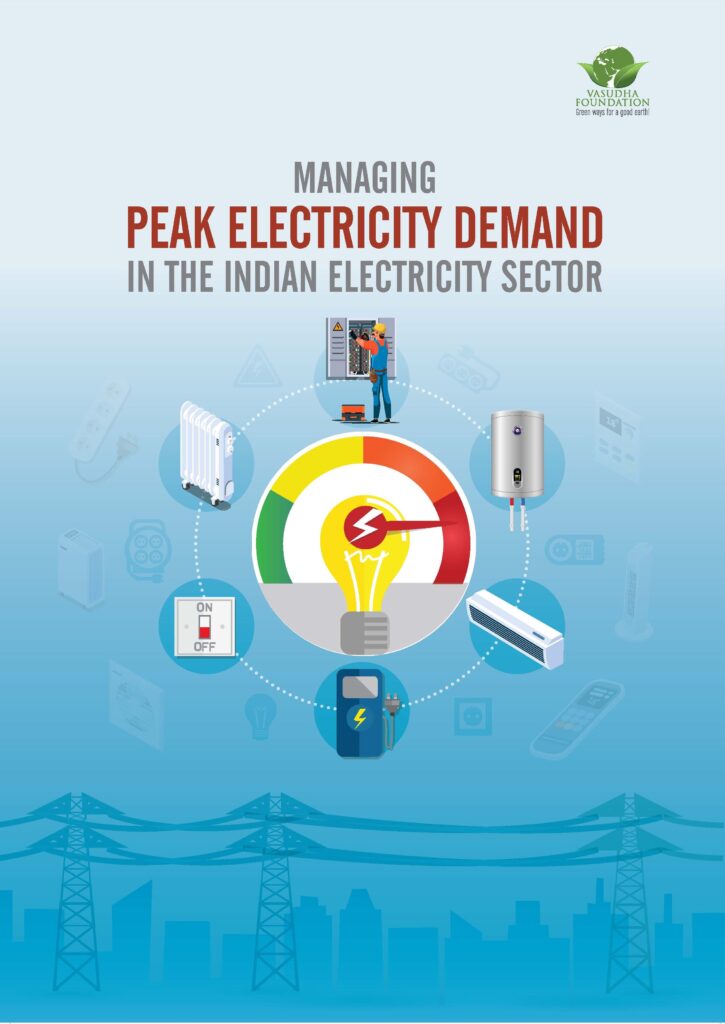
The Indian power system has operated under a paradigm of electricity shortage since Independence, owing to insufficient energy production in the country. In 1947, per capita electricity consumption was a mere 17 kWh and installed generation capacity was 1.36 GW. From the 1950s to the 1980s, power generation grew by 10–11 percent annually – a rate significantly higher than the real GDP growth during the same period.
In recent years, the Peak Electricity Demand in India is increasing at a rate higher than that of the total electricity consumption. Over the past decade, India’s Peak Electricity Demand has risen from 128 GW in 2011 to 216 GW in 2022, exhibiting an average growth rate of 5 percent (5.4 percent till 2019). The peak demand has further grown faster than electricity consumption growth in few Indian regions, leading to intraday variations in peak demand occurrence. This report delves into the role of peak demand change over the years and challenges lying ahead to mitigate the further rise of peak demand.
Few of the salient discussion points of the report:
Peak Demand in India is Increasing at a Rate Higher than that of the Electricity Consumption:
In the last 5 years, the growth rate of instantaneous peak demand has been 5.7 percent, surpassing the average electricity demand growth rate of 5.0 percent indicating a higher concentration of peak demand and an observable seasonal pattern. Over the last five years, in aggregate terms, the load factor has decreased from 83 percent in 2017 to 79 percent in 2022.
In Recent Years, the Occurrence of Peak Demand has Shown Seasonal and Time-of-day (ToD) Change:
The nature of peak demand occurrence has changed through months as well as within intraday. In recent years, the annual peak demand which predominantly occurred during late monsoon has shifted to the summer months (April-July) with intense heat conditions in the country, compounded by factors such as the widespread adoption of remote work practices, post-pandemic economic resurgence.
What is driving this change in demand patterns and will it escalate further?
Several factors contribute to the change in demand patterns. Economic growth plays a significant role in driving higher electricity demand, while climate change and urbanization also impact the demand for electricity. The report explores the relationship between residential cooling demand, affordability, and easy access to financing. Additionally, policy mandates are driving new demand in the electricity sector.
Possible solutions to address the peak demand challenge:
To address the peak demand challenge, the report proposes several solutions. Planning for resource adequacy is crucial to ensure a reliable supply of electricity during peak demand periods. Demand shifting and behavioral changes can help in optimizing electricity usage. The utilization of old thermal assets, such as coal and gas power plants, can contribute to meeting peak demand. Strengthening the market and implementing market-based mechanisms are also essential for managing peak electricity demand effectively.
FAQ
What factors are driving the change in demand patterns?
Economic growth, climate change, urbanization, residential cooling demand, affordability, and policy mandates are some of the factors driving the change in demand patterns.
What are the possible solutions to address the peak demand challenge?
Possible solutions include planning for resource adequacy, demand shifting and behavioural changes, utilization of old thermal assets, and market strengthening.
What is the future trajectory for India’s electricity peak demand?
The report presents a methodology for projecting India’s future electricity peak demand and provides insights into the expected trajectory.
How has the occurrence of peak demand changed in recent years?
The occurrence of peak demand has shown seasonal and time-of-day changes. In recent years, the annual peak demand has shifted to the summer months (April-July) due to intense heat conditions in the country and other influencing factors.
What are the implications of the change in peak demand patterns?
The change in peak demand patterns has implications for resource planning and management. It requires a more balanced consumption pattern and a higher load factor to ensure a reliable supply of electricity.
How can demand shifting and behavioural changes help in managing peak demand?
Demand shifting involves encouraging consumers to shift their electricity usage to off-peak hours through incentives or time-of-use pricing. Behavioural changes, such as adopting energy-efficient practices, can also contribute to reducing peak demand.
How can market-based mechanisms strengthen the management of peak electricity demand?
Market-based mechanisms, such as demand response programs and dynamic pricing, can incentivize consumers to adjust their electricity usage during peak demand periods. This can help in reducing the strain on the grid and optimizing resource utilization.




